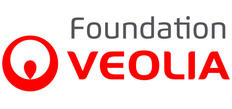
Over 40% of those on the site have no previous building industry experience. What training methods are used to ensure that they quickly become operational?
Training is primarily based on passing on and trying out practical techniques. The technical training facility offers a range of subjects, including learning to make boards, we manufacture small facades with gables…employees are trained all year round. We limit the theory, as it may trigger memories of academic failure in some employees.
The employees undertake every stage of the process: they put up scaffolding, cut and lay bricks, and so on. Motivated and supported employees quite quickly become independent workers and do remarkable work.
The hospital site is stunning but the weather conditions are sometimes difficult: strong winds in winter and high temperatures in summer, without taking into account the unique nature of working on an island from where rubble needs to be removed by boat. However, our employees are very hard-working!
The requirements are stringent and things have to be redone until the work is completed in line with industry best practice. For instance, three people alternated to install the buildings’ arched and conical windows, which were quite complicated to make. The first person brought the materials, the second person did the cutting, and the third person on the team installed the window. It takes a month to install one window. 900 bricks are used for each one and they are specially made for this project and have an old-style finish. We only use lime and sand; cement is banned. However, we teach the employees to use the tools and machines that they will find on conventional jobs.
I trained with the Compagnons du Devoir. The desire to pass on knowledge and stringent quality requirements are a key part of the companions’ ethos.

